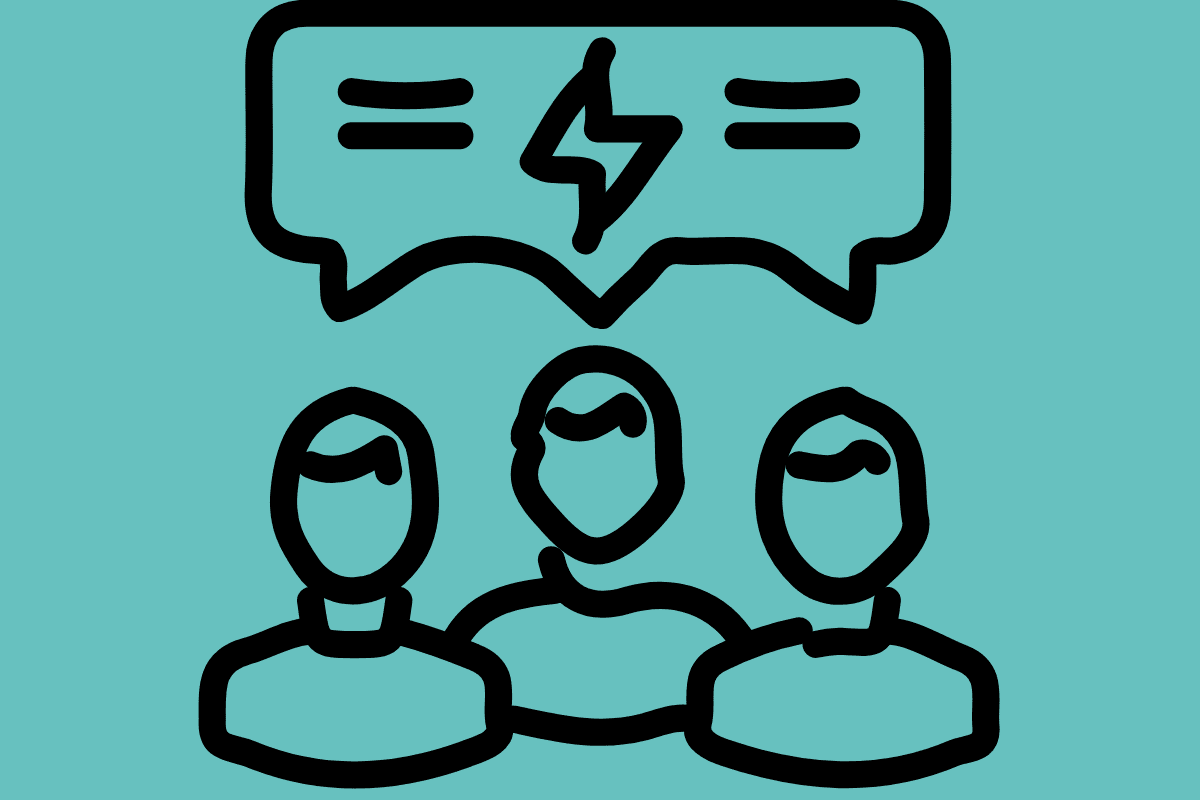The term “groupthink” was originally coined by Irving Janis in 1972, a Yale University social psychologist. He highlighted that groupthink can lead to groups making the worst possible decision, for example because all of the group come from the same type of background, and therefore do not explore all possible outcomes. He also highlighted however that there can be value in groupthink in the right circumstances, as it allows groups to make rapid decisions based on previous experience, and therefore complete tasks or projects quickly and efficiently without negative consequence.
Self-censorship
At best, groupthink occurs simply because people don’t think – they don’t realise they are omitting opinion, or have a blinkered viewpoint. However, most commonly, groupthink is the result of self-censorship, where an individual or group of individuals choose not to express opinion. That individual exercises control over what they say or do, primarily to avoid criticism, or as a result of fear of the group opinion, or hypocrisy. There are several reasons that self-censorship can occur, and it will depend on both the individual’s characteristics and the dynamics of the group for example:
- in a group with one or several dominant personalities, an individual may feel unwilling or unable to express their opinion. This could be because the dominants create an atmosphere of intimidation with the individual expecting to be criticised, or could be because the dominants overwhelm the conversation, leaving little room for alternative viewpoints.
- when a new group is formed, individuals may exercise self-censorship due to a lack of familiarity. Based on natural human instincts, they may be hesitant to express opinion and invite criticism, or face opposition from other members of the group that they don’t know.
- in a familiar or longstanding group where an individual is accustomed to the dynamics of the group, they may exercise conscious self-censorship if they are aware that their opinion will oppose the group and invite criticism, or may exercise sub-conscious self-censorship where they start omitting ideas that don’t fully align with the group ethos – here groupthink has become totally dominant.
It is worth noting that groupthink is not always the result of self-censorship, but can also be a side-effect of commonality, where the group shares traits that encourage them to problem solve in the same way or create a natural bias, for example the same social, economic or racial background.

The pursuit of consensus
Consciously or not, groupthink will cause individuals and therefore the group to overlook opposing views, potential problems, and healthy debate in favour of consensus thinking. We will be familiar with the opposite of groupthink where an individual will play “Devil’s Advocate”, deliberately highlighting an opposing view, however in consensus thinking, this critical thinking or rational debate won’t happen, leading to a narrowminded, limited, or restricted viewpoint.
The problem with groupthink
Fundamentally, groupthink is not in and of itself the problem. It can enable groups to draw on past experience to make quick decisions, and in the right circumstances, this in turn delivers efficiencies for the benefit of the group. It can be harmless and even helpful in preventing the group becoming unnecessarily paralysed by debate. At its worst however, groupthink can cause disaster on a monumental scale. The Watergate Scandal and the Challenger Shuttle disaster are two examples that are commonly attributed to groupthink.
At a group level, groupthink can passively or actively give rise to dangerous consequences, and commonly underpins the work of radical religious or political groups, racial supremacy groups, and cults. Employing the tenets of groupthink, individuals and groups can employ groupthink as a strategy for gaining and maintaining loyalty and reinforcing the beliefs of the group. It can reach the point that new ideas, no matter how heinous, can be introduced to the group and accepted without question by the members of that group. In this, groupthink can be used as a form of coercive control.

Combatting groupthink
Groupthink and its effects can be combatted through critical thinking strategies including:
- asking questions: Why is it true? How do you know it to be true? What other alternatives are there? Encouraging critical evaluation and dissenting opinion without consequence can enable fresh opinions and ideas. Practicing questions and critical evaluation can help reduce groupthink over time and minimise the likelihood of coercive control.
- encouraging participation: recognising that there may be quieter personalities in the group and encouraging them to contribute can lead to insightful opposing opinions. This can create a spirit of conscious debate and help prevent the strongest opinions in the group from dominating.
- seeking outside guidance: actively searching for views that oppose your own will help to determine whether your opinions and ideas are narrowminded or not. You may not find an opposing opinion to sway your own, but taking a devil’s advocate approach can specifically ensure you are challenging your own bias.

